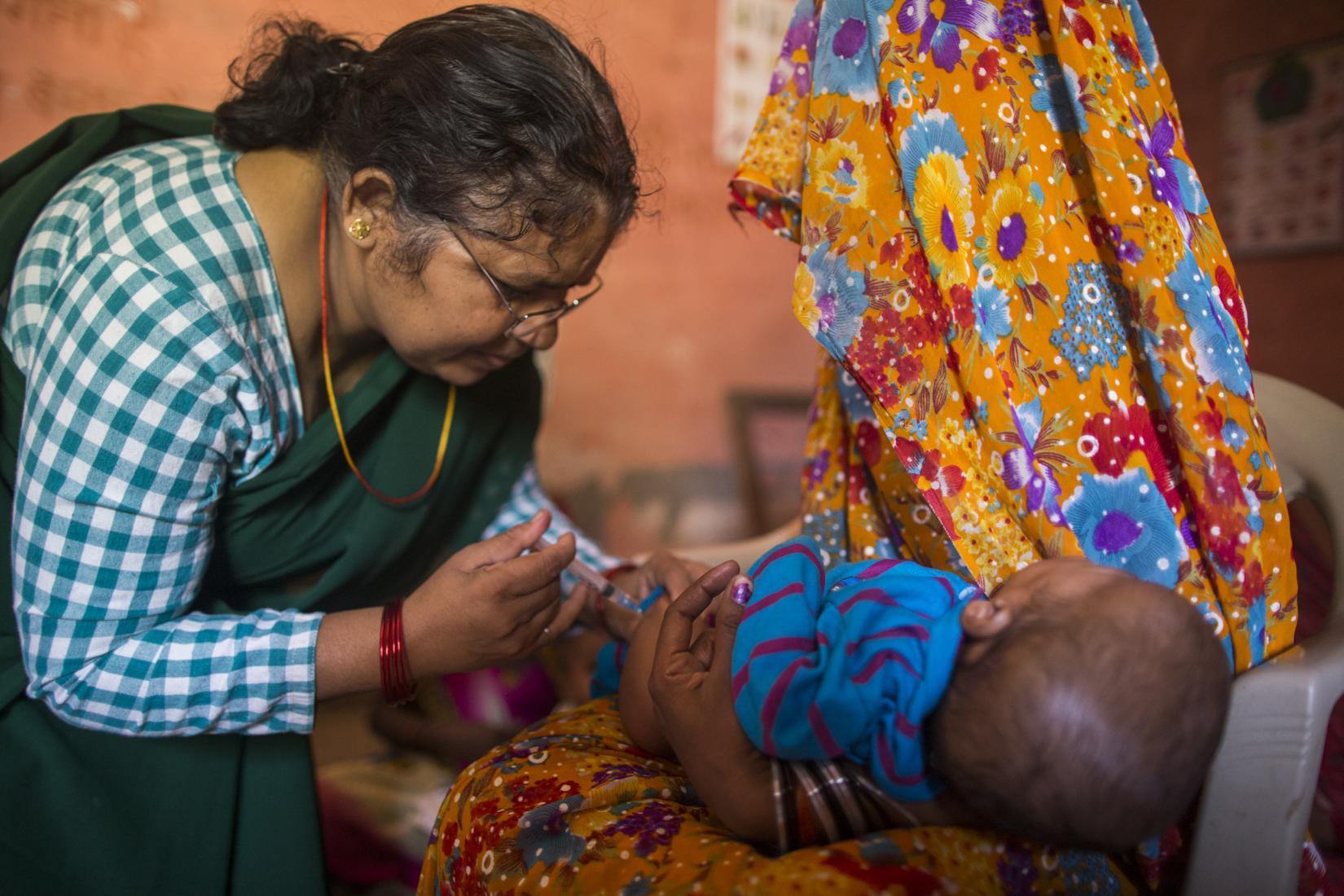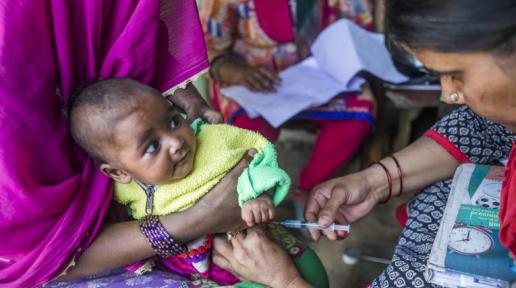By 2027, communities, especially the most disadvantaged, demand for and benefit from inclusive, universal, affordable, accessible, accountable and quality healthcare services while adopting positive health practices.
Outcome 1 contributes to progress on SDG 3, “to ensure healthy lives and promote well-being for all at all ages”. It aims to provide people and communities, especially those from underprivileged backgrounds, access to affordable, accessible and inclusive healthcare. Programmes under this outcome group focus on supporting government's on inclusive and high-quality public health systems that are resilient to future shocks. A key area of intervention is strengthening surveillance, monitoring, and treatment systems for diseases.
Challenges
- Making health services resilient towards pandemics and disasters
- Bridging urban-rural digital divides
- Ensuring an adequate health workforce
- Improving multisectoral coherence
- Harmonizing health indicators and data across states and districts
- Ensuring sufficient skilled health workforce in rural areas
- Need for better systems and capacities for digitalization of service delivery
- Ensuring infrastructure, communication and referral networks match population needs

The UN system’s contribution to Outcome 1 focuses on:
- Increasing the government capacity to make public health systems inclusive and of high quality,
- Strengthening the surveillance, monitoring and treatment systems for diseases through the adoption of One Health approach,
- Establishing and implementing a robust multisectoral approach for NCDs and
- Strengthening financing and sustainable business models around health.
UN development support and partnerships to achieve Outcome 1
The UN supports strengthening the health system's capacity to provide quality health services for all, focusing on reducing the financial burden on poor and marginalized groups. It focuses on universal access to sexual and reproductive health services, especially in states that lag behind, help improve maternal and new-born health outcomes. Special emphasis is laid on ending epidemics of communicable diseases, responding to the emerging challenges of non-communicable diseases (NCDs), stepping up the response to the threat of antimicrobial resistance (AMR) and eliminating neglected tropical diseases, along with ensuring continuity of essential services during humanitarian/disaster situations.
The strategies adopted for achieving the expected results include harnessing national flagship programmes and schemes to achieve the national goals as well as the SDGs; engaging with line departments and ministries to enhance reproductive health and family planning services; addressing risk factors for NCDs; combatting AMR; and strengthening systems for monitoring and early warning for zoonotic disease outbreaks. The UN system adopts a health system strengthening approach (infrastructure, health workforce and unified information management with an early warning system) in preparation of future disruptive scenarios, including pandemics and disasters, and supports the strengthening of the building blocks of the health system (service delivery, health workforce, health information systems, access to essential medicines, financing and governance) for equitable and affordable health services.
It facilitates investments in research, technology and innovations, including through South-South Cooperation, to improve access and reach to make universal health coverage (UHC) a reality. It also contributes to enhancing India's leadership in the pharmaceutical industry including vaccine manufacturing.
The UN system's interventions emphasize the life-cycle approach, continuum of care, quality of comprehensive services and building referral networks from primary health centres (PHCs) to tertiary care facilities. Through UN support evidence is generated and robust data systems are established to inform policies and programmes and to facilitate implementation of globally acknowledged high-impact practices.
LNOB focus
The UN’s contribution to Outcome 1 focuses on women, children, adolescents (especially from the marginalized groups such as the Scheduled Caste (SC) and Scheduled Tribe (ST) and communities), urban and rural poor, persons with disabilities (PwDs), persons living with HIV (PLHIVs), sexual minorities and displaced population groups, among others. Additional areas of UN intervention include achieving gender equality; transforming social norms; and enhancing the knowledge and skills of caregivers and communities to adopt evidence-based good practices and generate demand for preventive and responsive health services.
Synergies with government schemes and programmes:
Ayushman Bharat Health Infrastructure Mission, Ayushman Bharat, Pradhan Mantri Jan Arogya Yojana, Health and Wellness Centres, National Digital Health Mission, Jal Jeevan Mission, Swachh Bharat Mission, Midwifery Services Initiative, Surakshit Matritva Aashwasan (SUMAN), LaQshya, Mission Parivar Vikas, Family Planning Logistics Management Information System (FPLMIS), National AIDS Control Programme (NACP), Reproductive, maternal, neonatal, child, adolescent and newborn healthcare (RMNCHA+N) and India’s Family Planning 2030 commitments.

























